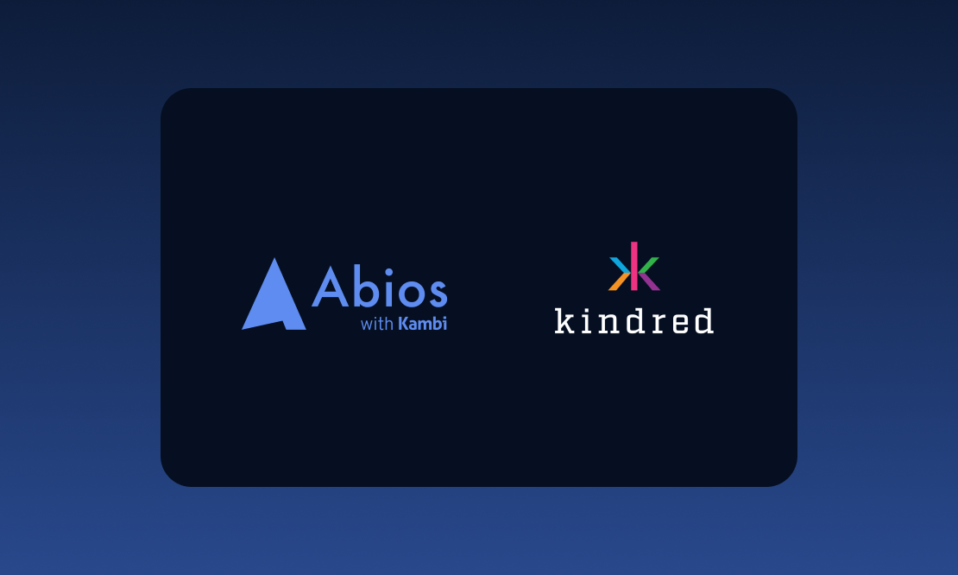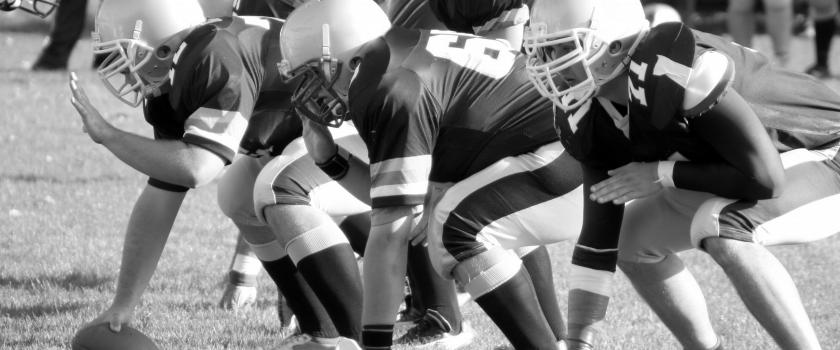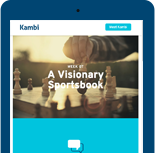

In this exchange with Noy, conducted via e-mail, we focus on NFL betting and football betting. In Europe, where Kambi is based, the popularity of in-game wagering is already enormous and will only continue to grow in the U.S. What can bettors expect not only at the DraftKings Sportsbook — which launched for New Jersey sports bettors on Aug. 6 — but at most sportsbooks as in-game offerings continue to expand?
Put simply, the availability of betting options will only be limited by imagination, bettor appetite, and the ability of oddsmakers/suppliers to hang sensible numbers. (Note: This interview has been lightly edited for brevity and clarity.)
Live Betting on NFL and Football in General — Lines, Props, Keeping Blowouts Interesting and What You Can Expect
Sports Handle (SH): For football, what types of events or outcomes draw the greatest number of wagers, in terms of total tickets and handle?
Simon Noy (SN): Very much as you’d expect: spreads, moneylines, and totals – both in terms of tickets and handle. After that it’s about player props. For some time, the emerging trend has been to follow players, not teams, and we see the effect of this in betting behavior too.
With this in mind, our expert trading team is always trying to devise and price up the most interesting markets per player – a quarterback to make at least three touchdown passes, or total passing yards over 300, or even offering in-game options like next touchdown scorer or our total points per player markets in the NBA.
SH: Are the majority of in-play wagers coming in on an adjusted moneyline or spread for the game’s outcome? Or 1Q, 3Q scoring? Team totals? Player props?
SN: Player props are popular among bettors and we only see them becoming even more so. The other important trend over the years from an in-game perspective is wagers on markets with shorter time frames, such as quarter, inning, etc. This is a really exciting way to bet, plus with so many games being played simultaneously, some users dip in and out of games and prefer to wager on the intervals they are watching in-game.
Taking this further, our offer of ‘instant markets’ is also proving very popular, with their super quick payouts and enabling the player to bet throughout the game even if the game is one-sided. For instance, the outcome of next drive in NFL, will a golfer hit the green, or will the next batter get a base hit in MLB — players can bet on these markets until the final play or pitch even when the game is essentially won.
SH: Your team obviously doesn’t have much time to compute lines and then get the board down in time. Are the lines coming purely from an algorithm or from humans or some combination? What happens when an offense goes into hurry-up mode?
SN: Absolutely, we have a high degree of modeling and automation but we have also invested consistently over the years in building up a highly skilled group of traders – we’re talking a trading team close to 300 sports fans here – so we definitely believe the best results are achieved only with a combination of the two.
There will always be something yet to be modeled or automated, and that’s where the human touch can make a difference. In your example of the hurry-up mode, the human trader who will have in-depth knowledge of the players and teams involved will have an informed opinion on what plays will likely unfold next, enabling them to adjust their inputs, and thus odds, accordingly thereby keeping markets open to bet. A sportsbook without this expertise will likely suspend their markets – that’s not the kind of UX (user experience) which will keep players happy.
SH: Has an influx of available data given bettors more advantage in recent years? Have the books benefited in the same way to nullify any edge?
SN: The increased availability of data has been great for the both the industry and for the players, particularly from a product perspective. We are able to compute more accurate and timely probabilities enabling us to expand our offerings to include more relevant and interesting bets. I wouldn’t say the data has given bettors more of an advantage, but it’s certainly closed the knowledge gap between bookmaker and player – bettors are more informed than they’ve ever been.
SH: Do you notice that some players are targeting or exploiting certain events in NFL games? Do some players simply hammer in-game wagers throughout the course of a game?
SN: I wouldn’t say anyone exploits a market – the line or price would move quite quickly if we felt someone had an edge on us. What we do have are players who enjoy particular markets because they find them entertaining, which was reflected in the handle we saw for ‘Outcome of Drive’ props in the Super Bowl.
Similarly, in tennis, players enjoy betting on each point as the match progresses, wagering smaller amounts. In that example it’s similar to someone placing a few dollars on the spin of a roulette wheel each time – it delivers a quick thrill with the next opportunity just seconds away, but also they have an angle based on their opinion of the players in that moment.
SH: Amongst NFL bettors, have you observed much appetite for betting on the outcome of every single play?
SN: For the Super Bowl, we rolled out a new market, ‘Outcome of Drive,’ where the users were able to wager on what would be the outcome of each drive as it unfolded and there was plenty of appetite for this, so we will be offering it on more events in the new football season. We are always pushing to innovate and add something new, and like a lot of our products, this offer was totally unique when compared to other B2B providers.
Overall, the majority of wagers are on the main offers – so another element we focus on is to ensure that these core markets are available and remain attractive for as long as possible during a game. When I say attractive, I mean we ensure the lines and prices offered reflect the current situation of the match. For instance, if the total points line of a basketball match is 200 but we have 180 on the board after the third quarter, simply offering a short price on 200 is no fun. We update the lines offered throughout the game to ensure bettors can still get an even wager on each side. This might sound simple, but if you look around the market it’s surprising how many get them wrong.
SH: What’s the typical hold for a sportsbook on in-game wagers?
SN: The hold is typically smaller on in-game than pre-game because the naturally quicker nature of in-game lends itself to less parlays and more singles, while in-game markets can be much harder to price, with traders and algorithms reacting in seconds to the conditions of play. We can’t go into too much detail on our operator’s results as these are not public figures – but our years of experience offering markets on U.S. sports and leagues means we are confident in our pricing even when offering the niche markets and situations we’ve been explaining here.
SH: Do you think in-play betting eventually surpasses pre-game straight wagers or props by overall volume?
SN: Certainly. It has already happened in most regulated markets and there’s no reason the U.S. won’t follow suit very soon. In-game can offer an exciting product that pays out 24/7 and we are sure this will appeal to the U.S. player once they get used to the wider offering and wonderful sports on offer.
For this to happen, quality of the product will be key: not just in terms of the number of relevant and exciting markets, but how those markets are presented and are they always priced up and available to bet on throughout the game. This is something we’ve been working hard on at Kambi – offering maximum availability even at the most crucial and exciting moments in the game.
SH: What’s some advice for novice bettors when looking at betting menu?
SN: Take your time, start with small stakes, ensure you understand the rules of the markets you bet on.
Article originally posted on Sports Handle by Brett Smiley.










